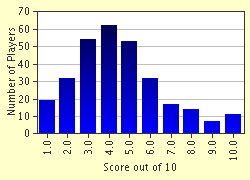Quiz Answer Key and Fun Facts
1. Britain in the eighteenth century was ruled over by three kings called George, beginning with George I in 1714. They were German relatives of Queen Anne, the last Stuart monarch. From which German state were they?
2. One of the giants of the eighteenth century was Dr Samuel Johnson, who famously wrote the English Dictionary. An enormously witty man, his aphorisms are now to be found in quotation books everywhere. Which of these, however, is not from the mouth of the good doctor?
3. Dr Johnson liked to hold forth to his friends at the Cheshire Cheese pub in London. Many eighteenth-century gentlemen did likewise and clubbed together at convivial meeting houses to discuss issues dear to their hearts. But which of these exotically-named associations was not a real eighteenth-century club?
4. One of the most shocking of all eighteenth century clubs was formed by Sir Francis Dashwood. He and some of his friends, known as the 'Mad Monks of Medmenham', met in the grounds of the ruined Medmenham Abbey to indulge in quasi-satanic orgies and general debauchery (so it is alleged). What was the name of Dashwood's association?
5. One of Dashwood's companions was a noted scoundrel and womanizer. He was notorious as the ugliest man in England, with a terrible squint, but he didn't let it stop him seducing women left, right and centre. To avoid imprisonment for scurrilous libels against George III's advisor, Lord Bute, he bribed the electors of Middlesex into making him an MP. (MPs were exempt from prosecution for libel). Name him.
6. The eighteenth century could be a turbulent time politically. In 1780 Lord George Gordon incited an infamous prolonged period of rioting. Against which group were the riots directed?
7. The turbulent political and social developments of the eighteenth century were recorded by the cruel, unblinking eye of a new breed - satirical printmakers. Images from the time which have lived on include "A Voluptuary under the Horrors of Digestion' (a vicious caricature of the Prince Regent) and 'The Bottomless Pitt' (poking fun at the Prime Minister). But who created those two pieces?
8. Scurrilous satiric images weren't the only art produced during the eighteenth century. Refined paintings were also produced in great numbers. Who painted one of the most popular of these, "Sarah Siddons as the Tragic Muse"?
9. There was generally a gulf between 'high' and 'low' art. Satirical printmakers could be very proficient, even inspired, artists, but since they depicted 'low' subjects like whores and rakes they were often looked down upon by contemporaries. The pleasure garden was an example of high and low art intermixed - the 'great and the good' took the air and listened to music in pleasure gardens, but these were also full of thieves and prostitutes. In which district of London was the most famous pleasure garden?
10. Here we are at the end of the quiz, so let's go to the end of the century, and let's throw military history into the mix since the later eighteenth century was dominated by wars, first with the rebellious Americans and next with the revolutionary French. In 1798 Horatio Nelson led the British fleet in a great and crucial defeat of the French at Aboukir Bay (the Battle of the Nile). Which ship did he command during this battle?
Source: Author
bolan1
This quiz was reviewed by FunTrivia editor
bloomsby before going online.
Any errors found in FunTrivia content are routinely corrected through our feedback system.

